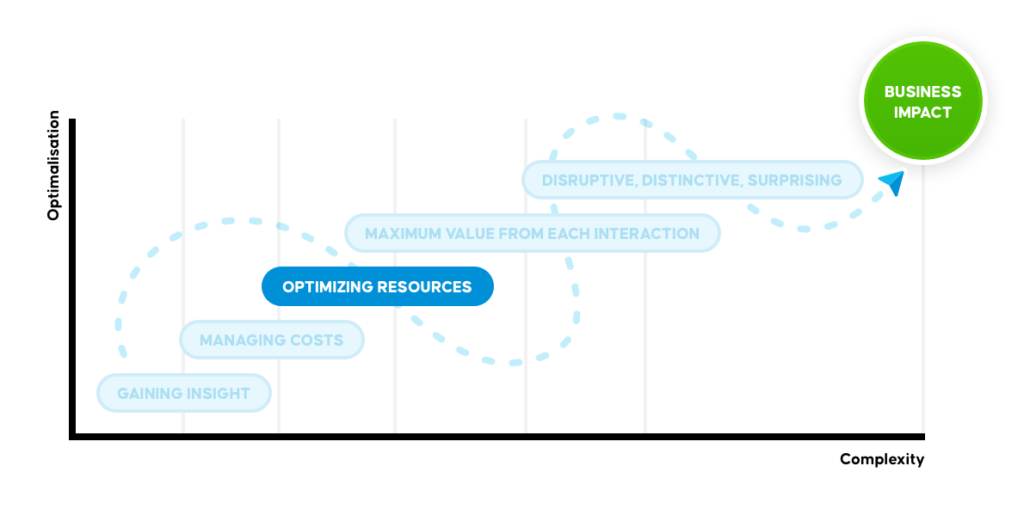Resources for more impact
Optimising the use of resources goes beyond ‘doing more with fewer people and things’. It also means that resources are deployed where they add the greatest value and make the biggest impact. When handling a service request, this means making sure the most qualified service agent is working on a specific case and can help the customer first time round.
For Field Service, this means the service technician can spend as much time as possible carrying out actual work on-site. The main goal here is ensuring a problem is solved after a single visit and ensuring the service technician will leave the customer satisfied. This is a ‘must-have’, given the ongoing trend towards scarcity of technical personnel.
Need to optimize resources
To make a real difference with the competition in the service process, optimal allocation of people and resources is essential.

Back office challenges
For the back office in service organisations, optimally allocating resources means deploying the most suitable service agent available, who can help a customer in the right way. Service companies are experiencing an increase in the number of service requests, while at the same time we’re seeing budgets and staffing levels remain unchanged. As a result, 63% of agents indicate striking the right balance between speed and quality is difficult. Smarter deployment of service agents can ensure a good balance is created and maintained.
Challenges in the field
In the Field Service Management sector, one of the greatest challenges is the current shortage of technically trained personnel. For Field Service Resources, optimal deployment means that the right technician, with the right qualifications and the right equipment, is deployed in the right place. Good planning and management of internal and external technicians is important to minimising any adverse impact of the scarcity of technically trained personnel.
From effectiveness to customer satisfaction
Optimizing resources not only lowers costs, it also increases customer satisfaction. After all, the customer directly deals with the right person and is helped in a single service visit without any need for follow-up appointments.
Streamlining processes through technology
Technology can support service companies in optimizing resources. By applying technology in the right way, back office workload for service agents and workload in the field for service technicians can be reduced.
Reducing workload for service requests
The increasing number of service requests for an unchanging number of service agents means that they need to be deployed in a smarter way in order to help the customer. By ‘routing’ service requests in the most effective manner, requests are sent to the right agents and workload distribution is always optimal. Furthermore, employing other communication channels, such as handling service requests via chat, can reduce the workload.
A well-maintained knowledge base can also ensure service agents can make use of each other’s information in situations that are new to them. As a result, knowledge in the organization is safeguarded centrally and the service agent can immediately present the solution to a frequently occurring problem. More and more service agents are indicating that automating routine tasks allows them to focus better on more complex work.
Use scheduling optimization software
Technology can also help further optimize Field Service planning. If, say, six service assignments and six service engineers need to be matched, 720 different scheduling possibilities are available. In the event of more service assignments and service engineers, complexity grows exponentially and the scarcity of technically trained personnel makes it even more important to make the right choices.
Automatically optimizing planning based on travel time, taking into account skillsets and requested SLAs, amongst other things, allows intelligent software to relieve planners. This also allows the planner to focus on the more complex tasks, and the deployed technician can get the largest possible amount of actual work done.
Would you like to improve your service by optimizing resources?
Ready to optimize? We are happy to help you on your way with one of our solutions. Get in touch!






